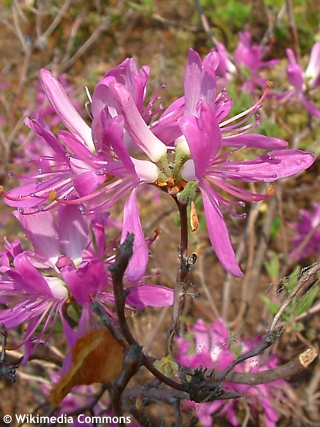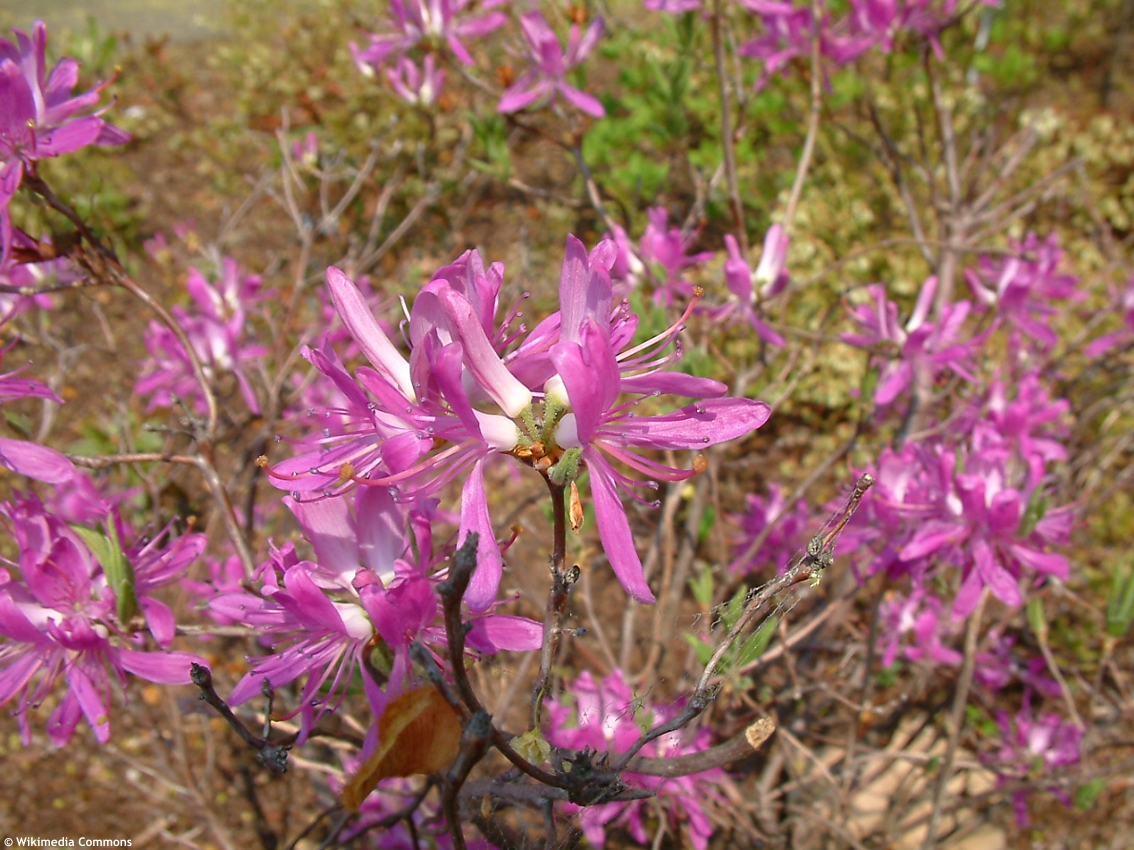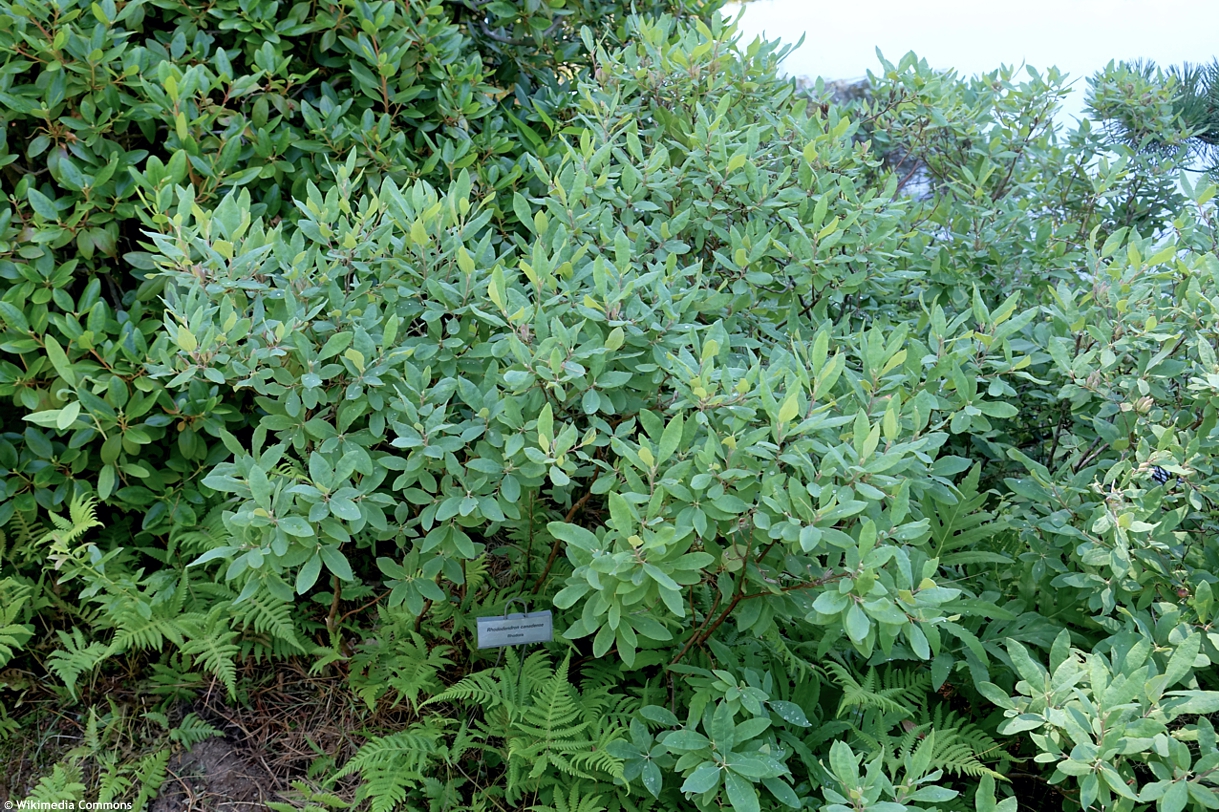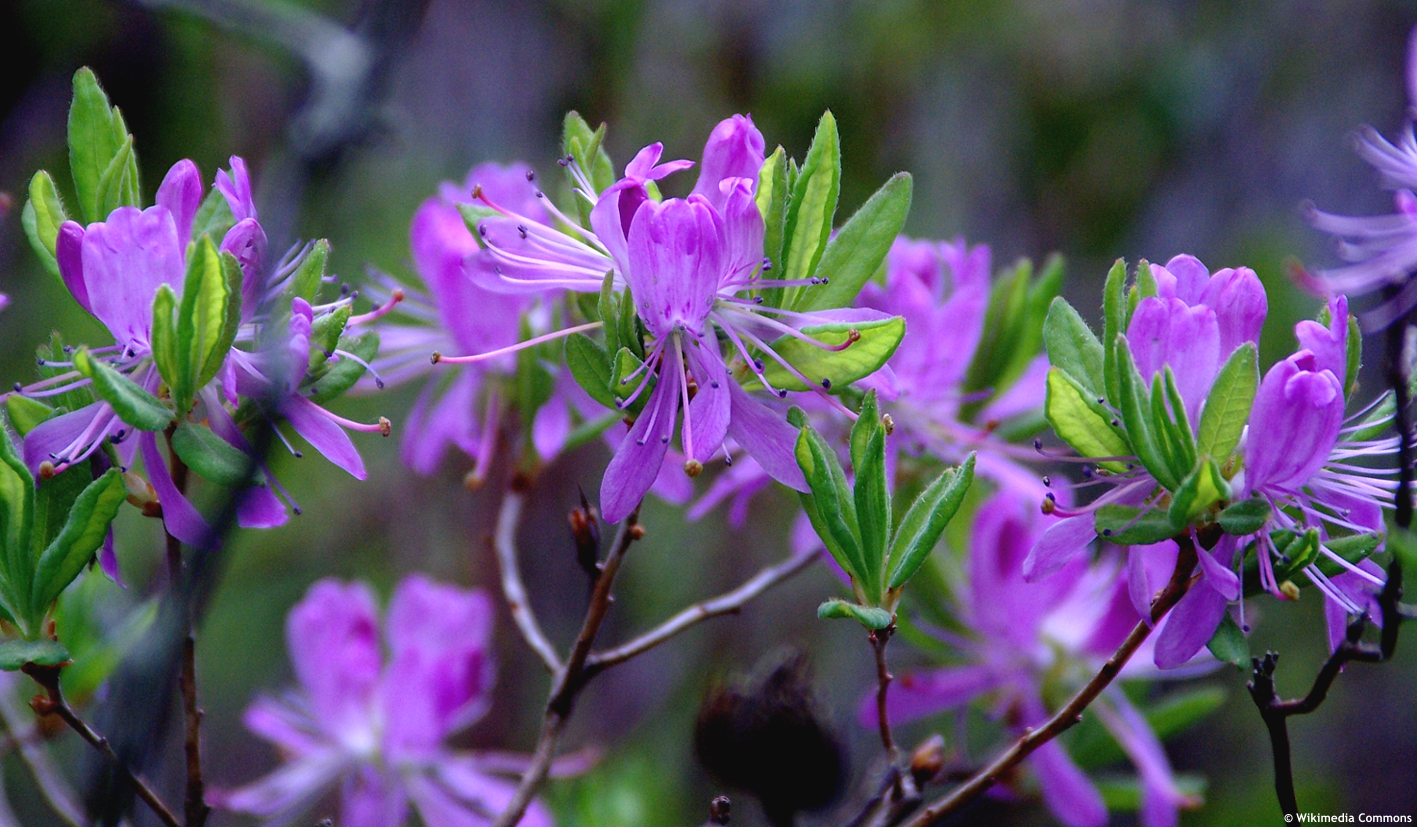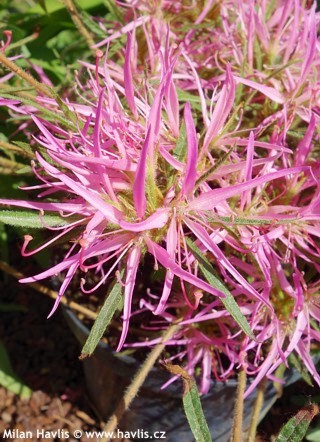Rhododendron canadense Canada rosebay, rhodora
size/type
medium-sized shrub,medium-sized shrub
usual height
0,5-1,2m
usual width
0,5-1m
leaves
deciduous broadleaf
colour of leaves
flowers
showy
colour of flowers
blooming time
April-May
location
full to partial sun
USDA zone (lowest)
2 (down to -45°C)
winter protection
for zone 5+6

for zone 7

categorized
Rhododendron
Rhododendrons are reliable, beautifully flowering, evergreen shrubs of variable origin: S.W. China, Himalayas, Northern America, and even Europe. The original species were hybridized several times for better performance so in the 1950´s there were more than 10,000 cultivars registered, and the number keeps increasing.Description of the plant:
Canada rosebay or the rhodora is a deciduous azalea native to Northeastern America where it is found in moist or boggy places. Its classification was uneasy and still in 19th century it was believed not to belong among rhododendrons. Thanks to its native habitat it is renowned for its excellent hardiness down to about -42 °C.Canada rosebay makes small, 5-lobed flowers with usually 7 long stamens which do not resemble rhododendrons or azaleas much. Their colour ranges from pale pink to rich rose purple, location pending. Once they have wilted leaves begin to appear. They are deciduous, narrowly oval to elliptic, 3-5 cm long, pale green, matt, and look like bog myrtle foliage.
It grows slowly into an airy, upright shrub about one meter tall and wide. To achieve a dense and compact shrub, and to get rid of its peculiar seed capsules, prune it immediately after flowering. If you are making a bog-like setting with plants such as andromeda, myrica, dwarf salix or birch i.e. mostly non- or inconspicuously flowering species, add this rosebay to splash it with flowers and colour in spring.
Canada rosebay prefers locations in full sun and needs constantly moist or wet ground – yes, it can grow in boggy sites along with other bog-loving plants. The roots are shallow, spreading to sides in search for nutrients. Never plant it too deep. The soil must acidic (of pH value 4.5-5.5) and rich in humus. Ideal soil mixture is peat with lime-free, light garden soil topped with leaf-mould. It is hardy to min. -42 °C (USDA zone 2b).
Last update 26-01-2021
QUICK PRICE OVERVIEW
CURRENTLY SOLD OUT
WANT TO TRY A SIMILAR PLANT?












